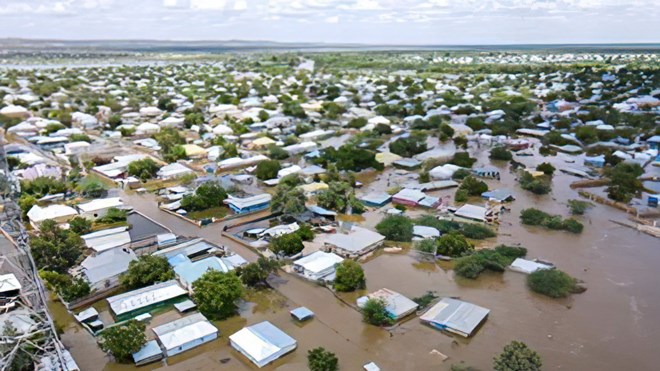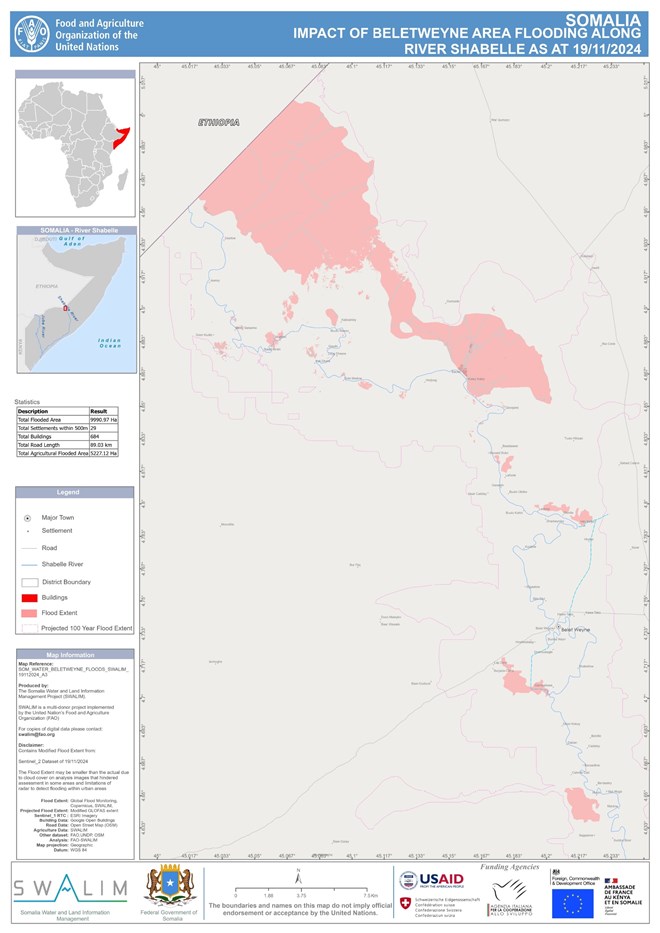
Thursday November 21, 2024

FILE PHOTO - Beledweyne submerged underwater
Beledweyne (HOL) — Heavy rains in the Shabelle River catchment area have caused severe flooding in in northern Hiiraan region, displacing hundreds and devastating livelihoods. Floodwaters have inundated ten villages, washing away farmland and raising urgent concerns about food security in the area, officials said Tuesday.
The Somali Disaster Management Agency (SoDMA) stated that relief efforts are prioritizing emergency shelter, food assistance, and health services for those affected.
The floods have destroyed significant hectares of crops, compounding ongoing food insecurity in the Hiiraan region. With much of the local population relying on agriculture, experts warn that the loss of farmland could lead to prolonged economic hardship.
To reduce the impact of future disasters, Hirshabelle State’s Ministry of Humanitarian Affairs has trained 25 young leaders in Beledweyne, equipping them to bolster early warning systems and build stronger community resilience.
Flooding is a recurring issue in Beledweyne, driven by climate change and inadequate infrastructure along the Shabelle River. Humanitarian organizations and local authorities have called for long-term investments in riverbank reinforcement, sustainable agricultural practices, and robust disaster management systems.
Editor's Correction Note: We would like to clarify that the recent flooding reported in our article occurred in northern Hiiraan, upstream of Beledweyne, rather than within the town itself. The flooding, caused by heavy rains in the Ethiopian highlands, has inundated approximately 10,000 hectares of farmland, impacting local communities. The Shabelle River's water level currently stands 40 centimeters above the high flood-risk threshold, signalling the severity of the situation. To provide additional context, we have included a detailed map from the Food and Agriculture Organization (FAO) indicating the affected areas and their proximity. We apologize for the earlier inaccuracy and remain committed to delivering precise and reliable reporting.
